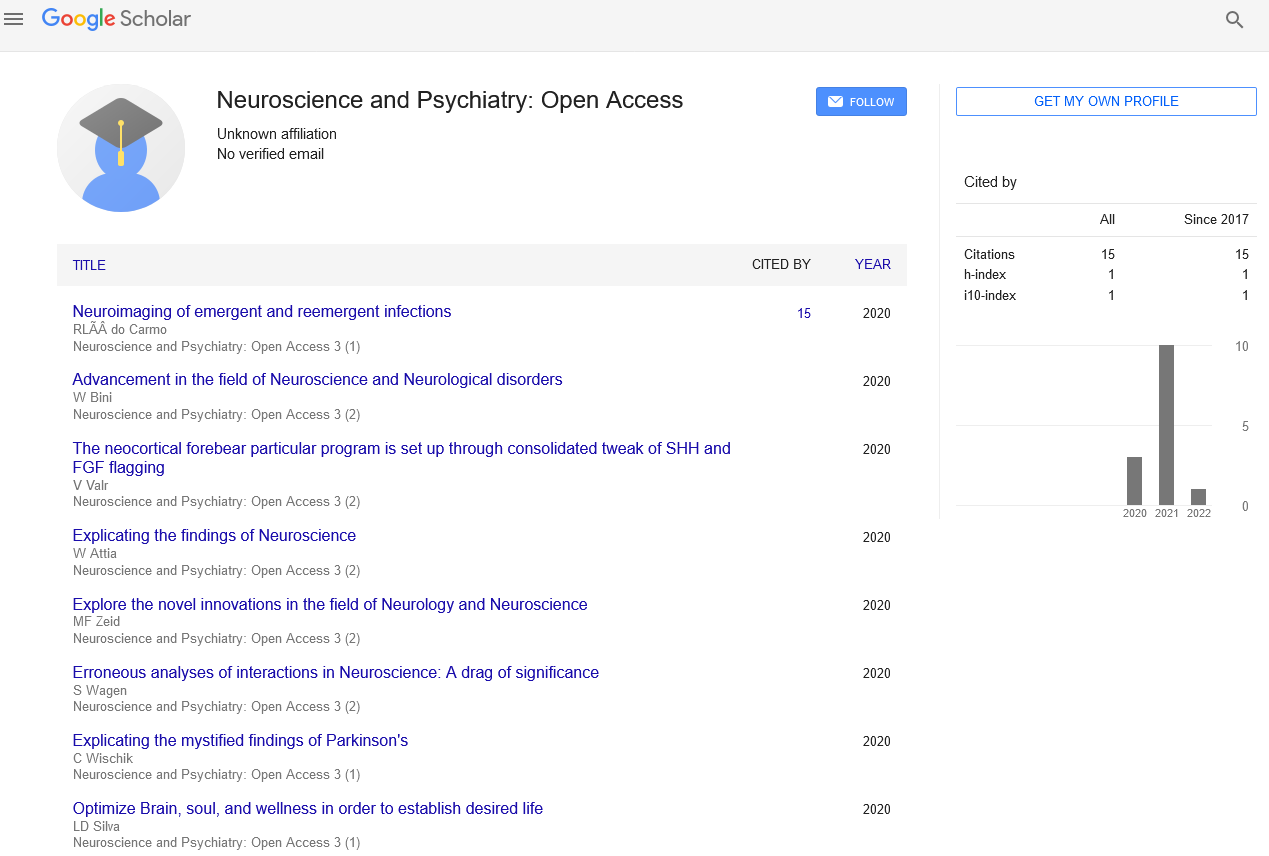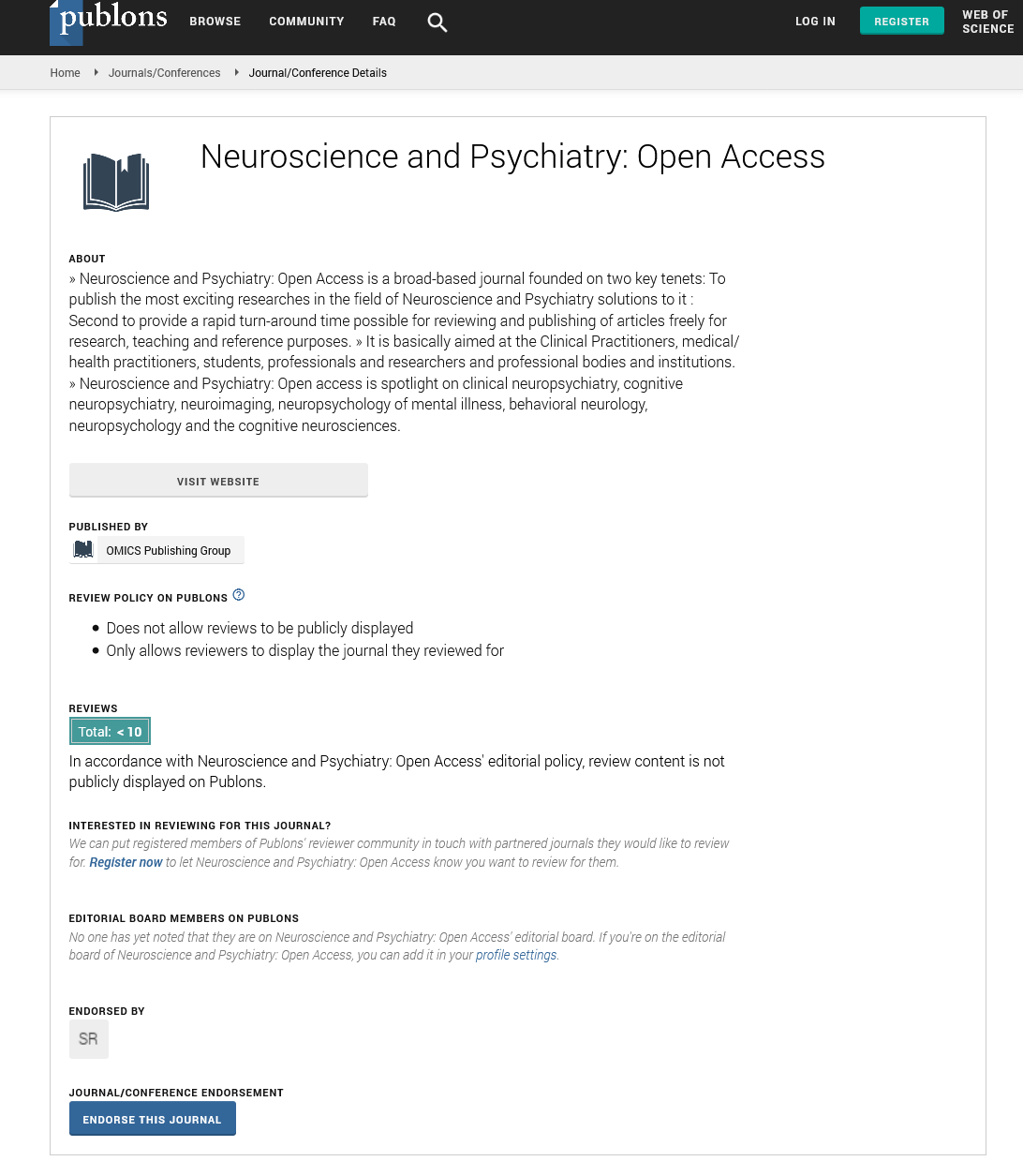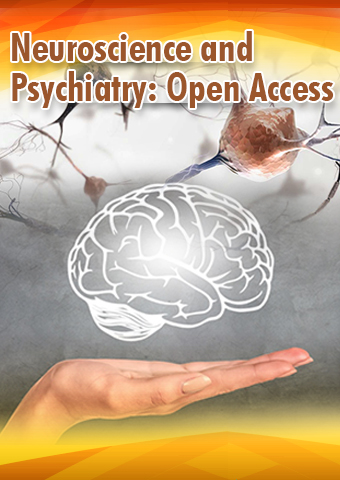Perspective - Neuroscience and Psychiatry: Open Access (2024) Volume 7, Issue 4
Embracing the Power of Neuroplasticity: Unleashing the Brain's Adaptive Potential in Neuroscience and Psychiatry
- Corresponding Author:
- Jean Baptiste
Department of Neuropathology, University Hospital Gasthuisberg, Leuven, Belgium
E-mail: jeanbaptiste.be54@uantwerpen.be
Received: 18-06-2024, Manuscript No. NPOA-24-133879; Editor assigned: 21-06-2024, PreQC No. NPOA-24-133879 (PQ); Reviewed: 05-07-2024, QC No. NPOA-24-133879; Revised: 15-07-2024, Manuscript No. NPOA-24-133879 (R); Published: 22-07-2024, DOI: 10.47532/npoa.2024.7(4).234-236
Introduction
Neuroplasticity, often hailed as the brain’s remarkable capacity for change and adaptation, lies at the forefront of modern neuroscience and psychiatry. In this comprehensive exploration, we delve into the intricacies of neuroplasticity, unveiling its mechanisms, implications for brain health and mental illness, therapeutic applications, and transformative potential within the realms of neuroscience and psychiatry.
Description
Understanding neuroplasticity: The dynamic brain rewired
Neuroplasticity refers to the brain’s ability to reorganize its structure, function, and connectivity in response to experiences, environmental stimuli, learning, and developmental processes. This dynamic phenomenon encompasses synaptic plasticity, structural plasticity, and functional plasticity mechanisms that underlie learning, memory, motor skills acquisition, and recovery from brain injuries.
At the cellular level, synaptic plasticity involves changes in synaptic strength, neurotransmitter release, and dendritic spine morphology that modulate neural communication and information processing. Structural plasticity encompasses dendritic arborization, axonal sprouting, synaptogenesis, and neurogenesis, contributing to circuit rewiring, neural regeneration, and brain remodeling. Functional plasticity involves adaptive changes in neural networks, cortical reorganization, and compensatory mechanisms that support adaptive behaviors and cognitive functions.
Mechanisms of neuroplasticity: From synaptic strength to brain rewiring
Neuroplasticity mechanisms are mediated by a myriad of molecular, cellular, and physiological processes that modulate neural activity, synaptic transmission, and gene expression patterns. Key players in neuroplasticity include neurotransmitters (e.g., glutamate, dopamine, serotonin), neurotrophic factors (e.g., Brain-Derived Neurotrophic Factor, BDNF), intracellular signaling pathways (e.g., cAMP-PKA pathway, MAPK pathway), and epigenetic modifications (e.g., DNA methylation, histone acetylation).
Long-Term Potentiation (LTP) and Long-Term Depression (LTD) are prototypical forms of synaptic plasticity that encode learning and memory processes through changes in synaptic efficacy and neuronal excitability. Hebbian plasticity principles, such as “cells that fire together wire together,” underscore associative learning, pattern recognition, and synaptic strengthening within neural circuits. Homeostatic plasticity mechanisms maintain neural network stability, synaptic scaling, and fine-tune excitatory-inhibitory balance to prevent runaway excitation or inhibition.
Neuroplasticity in brain health and aging
Neuroplasticity plays a crucial role in brain development, maturation, and resilience across the lifespan. During critical periods of development, neuroplasticity facilitates experience-dependent wiring of neural circuits, sensory-motor learning, language acquisition, and social-emotional development. Environmental enrichment, sensory stimulation, physical exercise, and cognitive engagement promote neuroplasticity, neurogenesis, and synaptogenesis, enhancing cognitive reserve and neural resilience against aging-related changes and neurodegeneration.
In aging and neurodegenerative disorders, neuroplasticity mechanisms undergo alterations, affecting cognitive functions, memory consolidation, and motor coordination. Age-related changes in synaptic plasticity, neurotrophic support, and mitochondrial function contribute to cognitive decline, memory deficits, and vulnerability to neurodegenerative conditions such as Alzheimer’s disease, Parkinson’s disease, and Huntington’s disease. Therapeutic strategies targeting neuroplasticity, such as cognitive training, physical exercise, dietary interventions, and neurostimulation techniques, aim to mitigate age-related cognitive decline and promote brain health.
Neuroplasticity in recovery and rehabilitation
Neuroplasticity serves as a cornerstone in rehabilitation and recovery following brain injuries, strokes, and neurological disorders. The brain’s adaptive capacity enables functional reorganization, compensatory strategies, and neural repair mechanisms that support motor recovery, language rehabilitation, and cognitive restoration. Intensive rehabilitation programs, task-specific training, constraint-induced movement therapy, and neurofeedback interventions harness neuroplasticity to optimize recovery outcomes and functional independence.
Neuroplasticity-driven interventions, such as Transcranial Magnetic Stimulation (TMS), transcranial Direct Current Stimulation (tDCS), and neurofeedback, modulate neural activity, enhance synaptic connectivity, and promote cortical reorganization in stroke rehabilitation, Traumatic Brain Injury (TBI) recovery, and neurodevelopmental disorders. Constraint-Induced Movement Therapy (CIMT) capitalizes on Hebbian plasticity principles to promote limb use and motor recovery in individuals with hemiparesis or motor deficits.
Therapeutic applications of neuroplasticity in psychiatry
In psychiatric disorders, neuroplasticity offers avenues for novel therapeutic interventions, personalized treatments, and resilience-enhancing strategies. Cognitive-Behavioral Therapy (CBT), mindfulness-based interventions, Dialectical Behavior Therapy (DBT), and exposure therapies leverage neuroplasticity mechanisms to promote adaptive coping skills, emotion regulation, and neural circuit rewiring in mood disorders, anxiety disorders, PTSD, and addiction.
Pharmacological interventions targeting neuroplasticity, such as antidepressants, mood stabilizers, and NMDA receptor modulators, promote synaptic plasticity, neurogenesis, and neurotrophic support in depression, bipolar disorder, and schizophrenia. Brain stimulation techniques, including repetitive Transcranial Magnetic Stimulation (rTMS) and Electroconvulsive Therapy (ECT), modulate neural activity patterns, normalize circuit function, and enhance neuroplasticity mechanisms in treatment-resistant cases.
Future directions in neuroplasticity research: Precision neuroscience and brain health
As our understanding of neuroplasticity deepens, future research directions focus on precision neuroscience approaches that tailor interventions to individual neurobiology, genetic profiles, environmental influences, and therapeutic response patterns. Personalized neuroplasticity-based interventions encompass neurofeedback-guided treatments, closed-loop brain stimulation protocols, and biomarker-driven strategies that optimize neural circuit rewiring and recovery trajectories.
Advancements in neuroimaging technologies, such as functional MRI (fMRI), Diffusion Tensor Imaging (DTI), and optogenetics, provide real-time insights into neuroplasticity dynamics, circuit-level changes, and network reorganization patterns in health and disease. Computational models of neuroplasticity, neural network simulations, and artificial intelligence algorithms inform predictive analytics, treatment optimization, and precision medicine initiatives that harness the brain’s adaptive potential for personalized brain health and resilience promotion.
Conclusion
In conclusion, neuroplasticity represents a dynamic and adaptive process that shapes brain structure, function, and connectivity throughout life. From developmental milestones to recovery from injuries and disorders, neuroplasticity underscores the brain’s remarkable capacity for change, learning, and adaptation. By embracing neuroplasticity, neuroscience and psychiatry converge to unlock new frontiers in brain health, personalized treatments, and resilience-enhancing strategies that empower individuals to thrive and flourish amidst life’s challenges.
As we navigate the complexities of neuroplasticity, interdisciplinary collaborations, technological innovations, and a deeper understanding of brain-behavior relationships propel us towards a future where precision neuroscience, personalized interventions, and brain resilience initiatives converge to optimize brain health and well-being for all.


